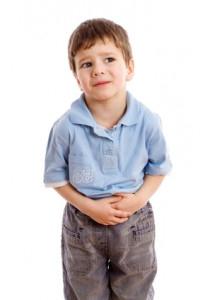Dysbacteriosis refers to a quantitative violation of the indigenous intestinal microflora, leading to the development of atypical or conditionally pathogenic microorganisms. Over the past decade, doctors and scientists have been arguing a lot about this pathology, recognizing that dysbiosis from a clinical point of view is not an independent nosological disease. It is generally accepted that this is a secondary pathological condition with severe manifestations, which leads to an imbalance between the microflora and the macroorganism.

Young children, especially in the first half of the year, are actively developing the composition of the microflora, and during this period minor disturbances cause dysbiosis in the child. Symptoms have a different clinical picture - the severity of the manifestations may not correspond to dysbiotic disorders. Sometimes with the slightest problems in the gastrointestinal tract there is no vivid symptomatology, but as soon as the child's immunity weakens and the protective mechanisms of the intestinal mucosa are disturbed, signs of poisoning appear .
In babies who are breast-fed, the microflora contains a huge number of bacteroids, clostridia, anaerobic cocci. Therefore, with a change in nutrition - the introduction of additional feeding - dysbiosis in a child often appears. Symptoms may include vomiting, flatulence, lack of appetite, diarrhea. This difficult period lasts up to a year. By 12 months, microflora is normal.
The main factors negatively affecting the pathogenic flora
The development of dysbiosis in children contributes to:
- taking antibiotics;
- non-infectious diseases;
- chronic and acute gastrointestinal diseases;
- frequent acute respiratory infections, flu, viral diseases, infections;
- harmful ecology: radiation, pesticides, heavy metals, industrial poisons.
Signs of Dysbiosis
In a child with diseases of the intestinal tract, significant signs appear: pain in the abdomen, changes in stool, aerophagy, bloating, rumbling, burping. With secondary extraintestinal clinical manifestations that are associated with hypovitaminosis, weakened immunity and impaired metabolic processes, dry mucous membranes, stomatitis, seizures, rashes on the skin and itching, sleep disturbance, desquamation, glossitis, weakness are observed.
Signs of dysbiosis in newborns with impaired microflora are usually pronounced. Babies have a liquid, foamy stool with an unpleasant odor, gas formation, bloating, and colic are observed. In this regard, children become restless, often cry, their daily regimen is violated, often this is accompanied by frequent spitting up and vomiting.
Dysbacteriosis in a child proceeds differently. Symptoms of staphylococcal dysbiosis are as follows: diarrhea with an admixture of blood, vomiting with a protracted course. When an intestinal infection is attached, therapy includes antibiotics.
Prevention
So that in the future the newborn does not have such deviations, it is necessary to put the baby to the breast several hours after the birth, not to get carried away with adapted mixtures in the future, and also to introduce complementary foods correctly and gradually. Mom and baby need to take prebiotics or biological supplements that contain bifidobacterin and lysozyme.
Therapy
Only under the supervision of a pediatrician is dysbiosis in a child treated. Symptoms will disappear after the environment in the intestines is restored. Antimicrobials are prescribed, which suppress the development of gas-forming and putrefactive microflora. Medications normalize the absorption of trace elements and vitamins, as well as restore intestinal motility. See your doctor at the first sign of dysbiosis.